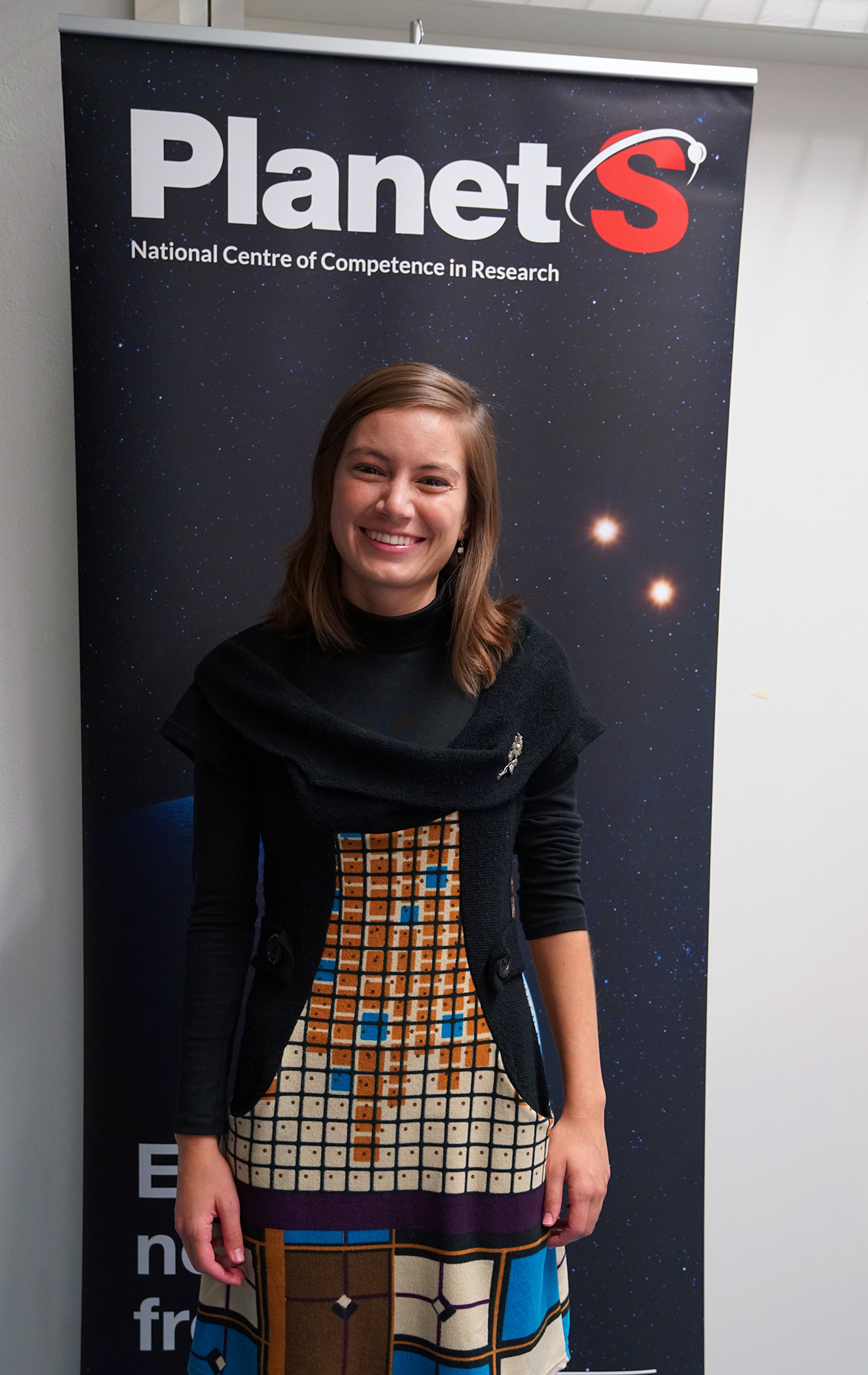Neural networks predict planet mass
To find out how planets form astrophysicists run complicated and time consuming computer calculations. Members of the NCCR PlanetS at the University of Bern have now developed a totally novel approach to speed up this process dramatically. They use deep learning based on artificial neural networks, a method that is well known in image recognition.
Planets grow in stellar disks accreting solid material and gas. Whether they become bodies like Earth or Jupiter depends on different factors like the properties of the solids, the pressure and temperature in the disk and the already accumulated material. With computer models the astrophysicists try to simulate the growth process and determine the interior planetary structure. For given boundary conditions they calculate the masses of the gas envelope of a planet. "This requires solving a set of differential equations", explains Yann Alibert, science officer of the NCCR PlanetS at the University of Bern: "Solving these equations has been a specialty of the astrophysicists here in Bern for the past 15 years, but it is a complicated and time consuming process."
To speed up the calculations Yann Alibert and PlanetS associate Julia Venturini of the International Space Science Institute (ISSI) in Bern adopted a method that has already captured many other fields including the smartphone in our hand: deep learning. It is for instance used for face and image recognition. But this branch of artificial intelligence and machine learning has also improved automatic language translation and will be crucial for self-driving cars. "There is a big hype also in astronomy," says Alibert: "Machine learning has already been used to analyze observations, but to my knowledge we are the first to use deep learning for such a purpose." Alibert and Venturini publish their results in the journal Astronomy and Astrophysics (A&A).
Database of millions of planets
First, the researchers had to create a database. They calculated millions of possible interior structures of planets. "It took us three weeks to compute all these test cases using a code developed by Julia Venturini during her PhD in Bern," says Alibert. The next step was to decide the architecture of an artificial neural network, a set of algorithms that passes input data through mathematical operations and has the ability to learn without being explicitly programmed. "Then, we trained this network using our gigantic database," explains the astrophysicist: "Now our network is able to predict the mass of a planet being formed under certain conditions with a very good accuracy and tremendously faster than solving the differential equations."
The deep learning process is much more precise than previously developed methods to replace the solution of differential equations by some analytical formulas. These analytical formulas could predict that a planet should grow up to the mass of Jupiter, while in reality it could not have more mass than Neptune. "We show that our deep neural networks provide a very good approximation at the level of percents," summarizes Alibert. The researchers provide their results on the software development platform GitHub, so that colleagues working in planet formation all around the world benefit from them.
Reference:Yann Alibert, Julia Venturini: Using Deep Neural Networks to compute the mass of forming planets, «Astronomy and Astrophysics» (A&A), March 2019, http://arxiv.org/abs/1903.00320 |
National Centre of Competence in Research PlanetSThe discovery in 1995 of the first giant planet outside our solar system by Swiss astronomers spawned a unique revolution in modern astronomy. Since then, the progress has been such that the field is now shifting from an era of discovery to one of physical and chemical characterisation. The NCCR PlanetS allows responding to this shift by providing an interdisciplinary research programme dedicated to the study of the origin, evolution, and characterisation of planets. Established by the Swiss National Science Foundation in June 2014, the NCCR PlanetS brings together researchers from the Universities of Bern (Leading House), Geneva (co-Leading House), and Zürich as well as of the ETHs Zürich and Lausanne. It is structured in research projects and platforms which provide the structuring elements of the NCCR. In addition to scientific research, the NCCR PlanetS assumes a coordinating role in a vast range of activities connected to planetary sciences ranging from the definition of a national roadmap for instrumentation and space missions to the promotion of young scientists with a special focus on women. It also carries out a large multi-regional education and outreach programme. Ultimately, PlanetS lays the foundations of a Swiss Institute of Planetary Sciences (SIPS) that will carry on these activities beyond the lifetime of the NCCR. More information: http://nccr-planets.ch/ |
2019/03/13


